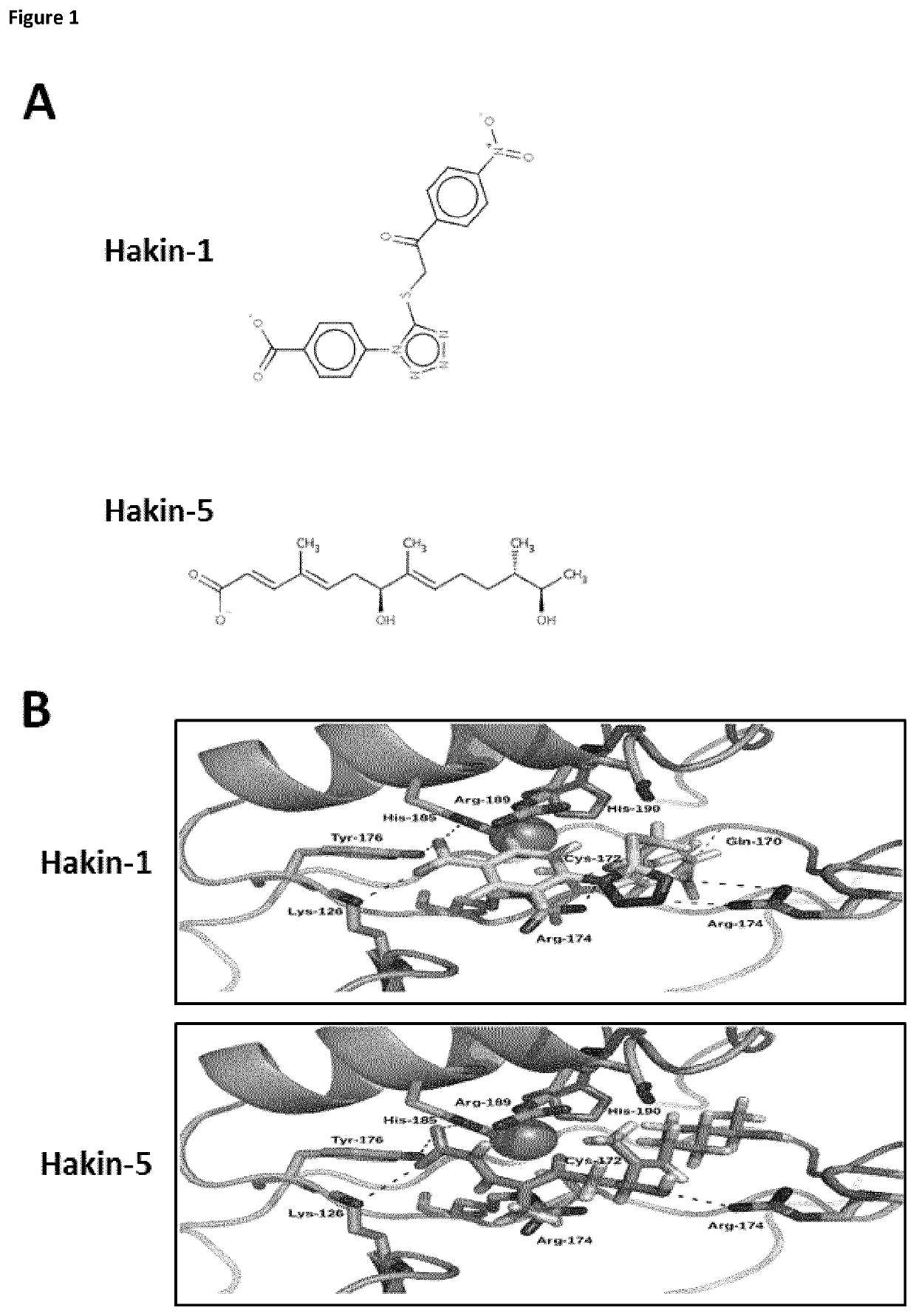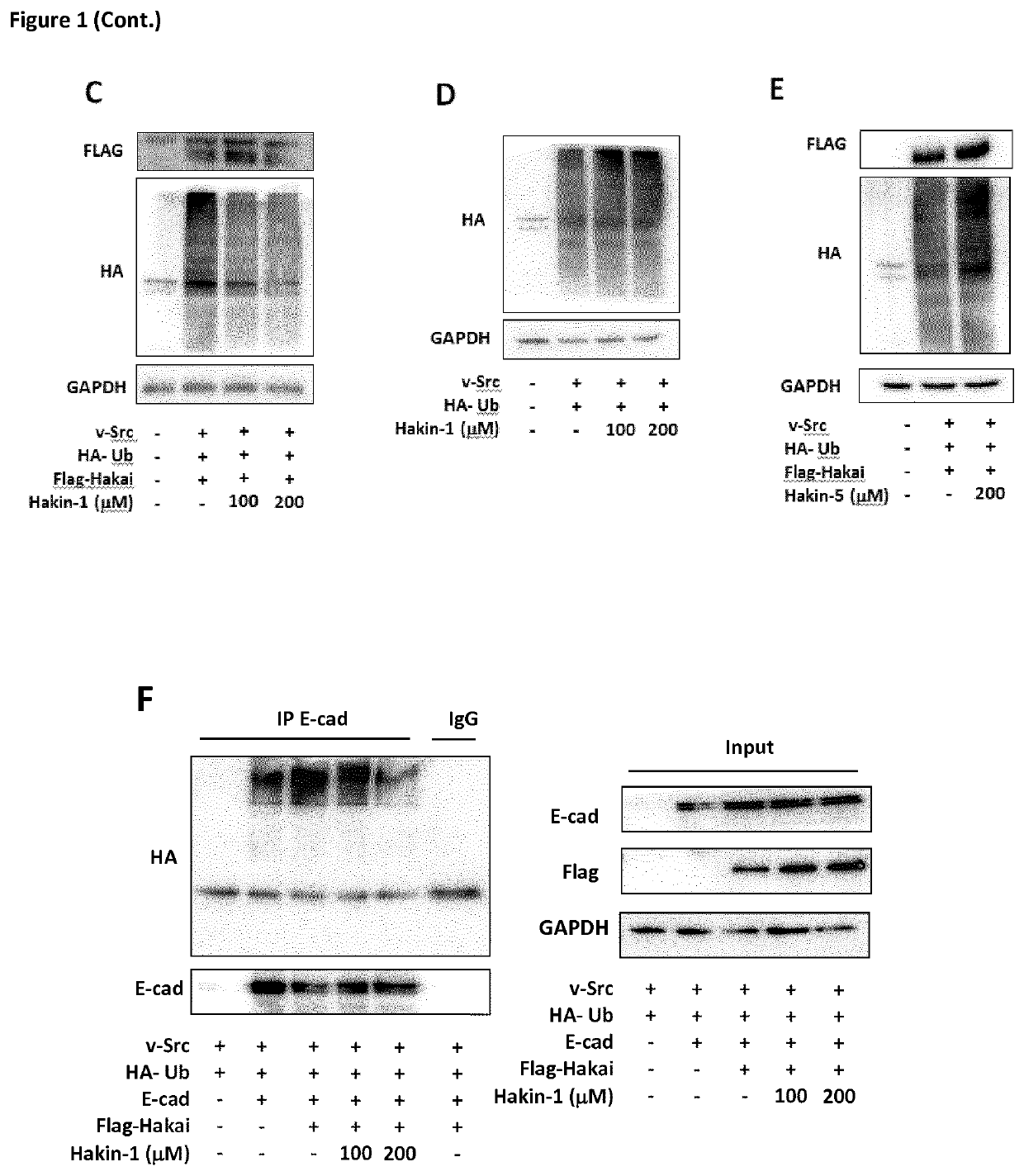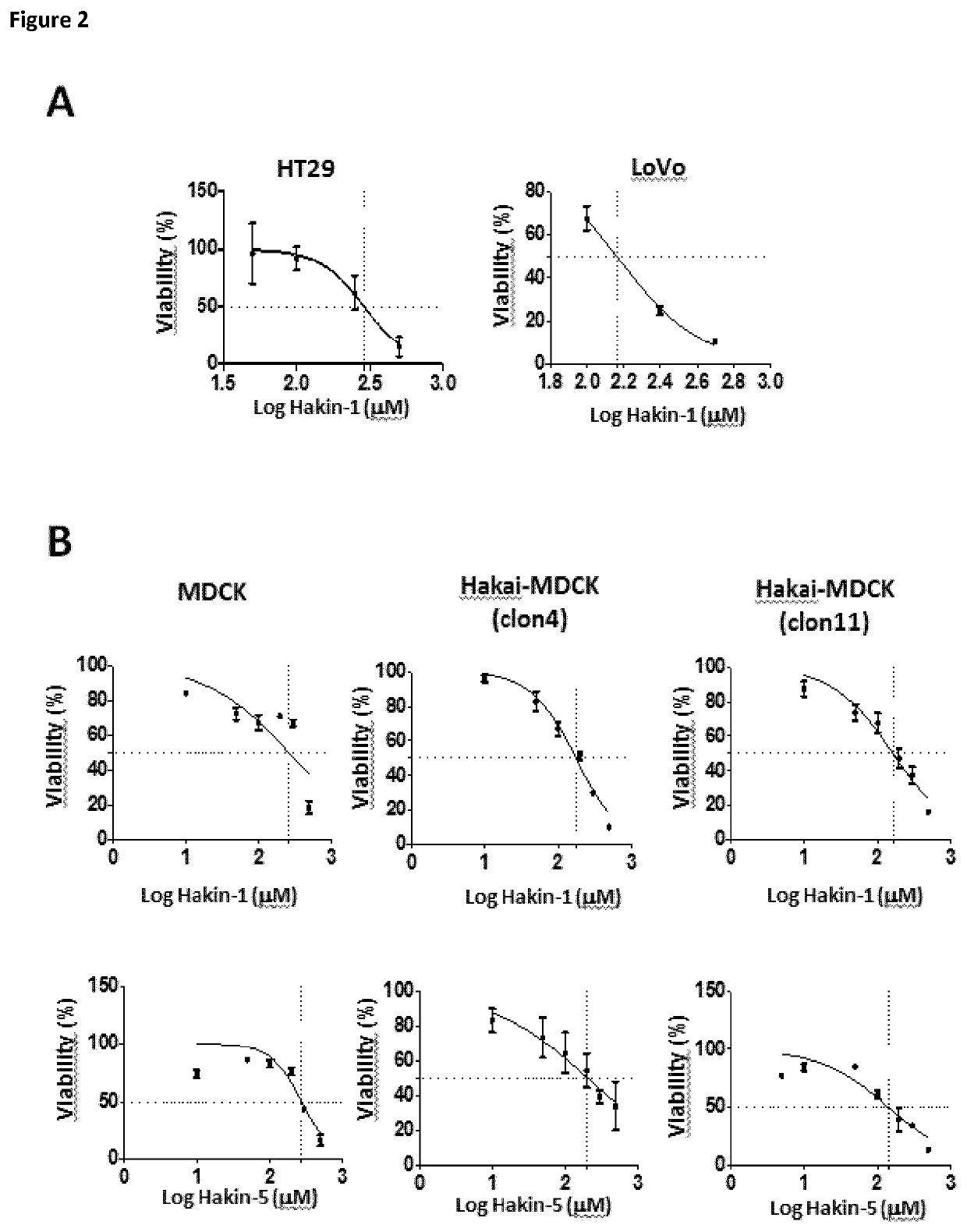Compounds that selectively and effectively inhibit hakai-mediated ubiquitination, as Anti-cancer drugs
a technology of hakai and ubiquitination, which is applied in the field of compounds, can solve the problems of poor prognosis, compounds capable of effectively inhibiting, and loss of hakai, and achieve excellent anti-cancer drugs useful, effective inhibition of hakai-mediated ubiquitination, and reduced toxicity.
- Summary
- Abstract
- Description
- Claims
- Application Information
AI Technical Summary
Benefits of technology
Problems solved by technology
Method used
Image
Examples
example 1
Synthesis
[0121]The compounds listed through-out the present specification can be prepared following the general synthetic route below:
example 2
[0122]2.1. Materials and Methods
[0123]Protein and ligands models. The X-ray crystal structure of the phosphotyrosine-binding domain of Hakai (PDB 3VK6) was downloaded from the Protein Data Bank and the dimer modelled using the proper symmetry operations. Amino acid protonation was carried out using the pdb2pqr server at a pH of 7.2. 3D models for the ligands were built using the Virtual Screening and Data Management Integrated Platform (VSDMIP), as described elsewhere. Briefly, the initial 3D coordinates for each ligand were generated with CORINA [Sadowski, J.; Gasteiger, J.; Klebe, G. Comparison of Automatic Three-Dimensional Model Builders Using 639 X-Ray Structures. J. Chem. Inf. Comput. Sci. 1994, 34, 1000-1008 (DOI: 10.1021 / ci00020a039)]. Thereafter, ALFA [4] was used to generate a large variety of conformers for each of which MOPAC-calculated atomic partial charges were assigned by employing the AM1 semiempirical model and the ESP method. All ligand models were stored in the V...
PUM
| Property | Measurement | Unit |
|---|---|---|
| compositions | aaaaa | aaaaa |
| cancer cell plasticity | aaaaa | aaaaa |
| Chemical structure | aaaaa | aaaaa |
Abstract
Description
Claims
Application Information
 Login to View More
Login to View More - R&D
- Intellectual Property
- Life Sciences
- Materials
- Tech Scout
- Unparalleled Data Quality
- Higher Quality Content
- 60% Fewer Hallucinations
Browse by: Latest US Patents, China's latest patents, Technical Efficacy Thesaurus, Application Domain, Technology Topic, Popular Technical Reports.
© 2025 PatSnap. All rights reserved.Legal|Privacy policy|Modern Slavery Act Transparency Statement|Sitemap|About US| Contact US: help@patsnap.com



